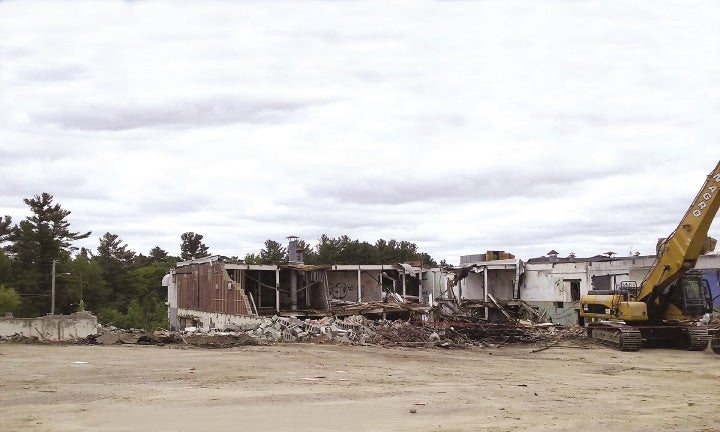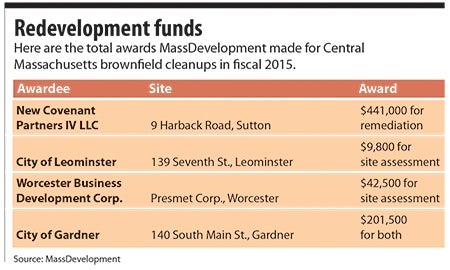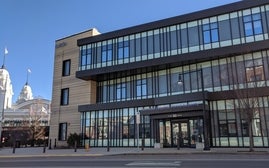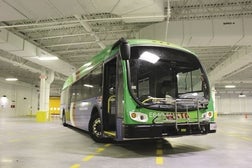Brownfield complexities cause developer caution
Historically, the Mill Street Corridor area of Gardner was home to several esteemed manufacturers, including S. Bent & Brothers Co. When the furniture maker closed its doors in 2001 after nearly 134 years of business, it left behind a building and site that had been contaminated due to years of production and energy usage.After the city of Gardner took over the 35 acre S. Bent property in 2007 through tax title, it used nearly $400,000 from MassDevelopment and the U.S. Environmental Protection Agency to demolish about 300,000 square feet of old S. Bent mill buildings and to eliminate environmental concerns. The site is now pad-ready, meaning it's ready to be sold to a private developer.
The former S. Bent development is part of Gardner's Mill Street Corridor urban renewal area, 55 acres of contaminated industrial land with two city-owned parcels that Gardner hopes will be the future home of new businesses that create sustainable, 21st century jobs. It's one of thousands of polluted sites in Massachusetts, called brownfields, where contamination is caused by a variety of factors, including the presence of high consumers of energy, like manufacturers.
The state has incentives in place for potential developers of these sites, but in order to attract developers, cities need to complete a baseline damage assessment so potential buyers know what they're getting themselves into.
“What [developers] fear most is uncertainly. The best thing a local community can do for the redevelopment of parcels is to get a baseline assessment,” said Edmund Coletta, spokesman for the Massachusetts Department of Environmental Protection. “Provide baseline information, so developers can make a rational choice, and set cleanup rules at a pace that's linked to development.”
Brownfields law
In 1998, then Gov. Paul Cellucci signed the Brownfields Act into law, which created new incentives to clean up contaminated sites, including liability relief for new property owners who were not responsible for site damage and the creation of the MassDevelopment fund. Over the years, MassDEP has received 46,000 notifications of contaminated sites and cleaned up 30,000 of them.
Although the term “brownfield” isn't clearly defined by the state, it's essentially a site where real or perceived contamination is prohibiting development.
It's a hard term to define is because it's hard to definitively say whether or not contamination is the true factor hindering redevelopment of a property, said Paul Locke, assistant commissioner for waste site cleanup at MassDEP.
“If you look at brownfields as sites where contamination or fear of prevention is preventing development, it's hard to tease out whether lack of development is connected to contamination,” Locke said.
Cleanup partnerships
Cleanup is done through partnerships between the state and private contractors, Locke said. It used to be that the state would do it on its own, but that left many smaller sites ignored. Now, the state works with contracted licensed site professionals to oversee the cleanup of contaminated sites. This streamlines the process a bit, Locke said.
“Because those were lower priority sites, DEP couldn't have enough staff so nothing could move ahead, including development of those properties,” he said.
MassDevelopment oversees the Brownfields Redevelopment Fund, established through the Act in 1998. The fund, which had $649,462 at the end of 2015, according to its annual report, has been recapitalized three times – in 2001, 2007, and 2014.
Since its establishment, $89 million has been invested, including 93 projects totaling $10.3 million in Central Massachusetts. In fiscal 2015, $6.3 million was provided from the fund, down quite a bit from 2013, when the fund saw its most activity with $20 million invested in 76 projects.
Even with state funding, brownfield remediation has its hurdles: unexpected contamination can cause cleanup costs to rise, even after site assessments have been completed; and questions over who/what caused the issues can lead to disputes with previous landowners.
WRTA's need for $4M
In Worcester, the Worcester Regional Transit Authority is in the process of cleaning up a site at 42 Quinsigamond Ave., the future home of a new maintenance facility. Years of activity left cyanide and coal tar sludge on-site.
The site is the former home of a gas plant that operated there from the mid-1800s until 1969, according to a letter from State Sen. Michael O. Moore (D-Millbury) and State Rep. Daniel M. Donahue (D-Worcester) to DEP Commissioner Martin Suuberg.
The WRTA first purchased the site in 2014 from Boston utility conglomerate Eversource Energy, and after both entities completed assessments of the property, the total project costs were estimated to be $15 million.
City officials and local leaders managed to successfully lobby the state to cover that total estimated project costs – through state payments that totalled $16.2 million – but as cleanup crews kept digging, more and more damage was discovered, including holding tanks possessing contaminated petroleum soils and asbestos. That discovery led to a need for an additional $4 million to remove toxic soil from the site, said Jonathan Church, administrator of the WRTA.
Michael Durand, a spokesman for Eversource, said the WRTA completed its own assessment of the property before they bought it.
“We were open and upfront with WRTA about the property's history. When we and DEP met with them, we provided all associated files to WRTA prior to the acquisition of the property, and they also did their own site testing for their due diligence,” he said.
However, Church said once the WRTA got on the ground, it was clear it was going to cost a lot more than that.
Sen. Moore said he has been working with the state to get additional funding for the project.
“If we're going to be utilizing this site as a place for people to be utilizing, I don't think it's safe or proper for the state or the city to have any sort of environmental hazards exposed to the public,” he said.
Although additional funding isn't yet official, Church said the project should remain on track. He said he feels confident that the WRTA will receive the money it needs.
“We're working with MassDOT Rail and Transit [Division] to secure a contract. Hopefully we'll be securing it sooner rather than later,” he said.
CORRECTION: A previous version of this article incorrectly stated the Brownfields Redevelopment Fund currently has $75 million. It started with that amount but ended 2015 with $649,462.













0 Comments